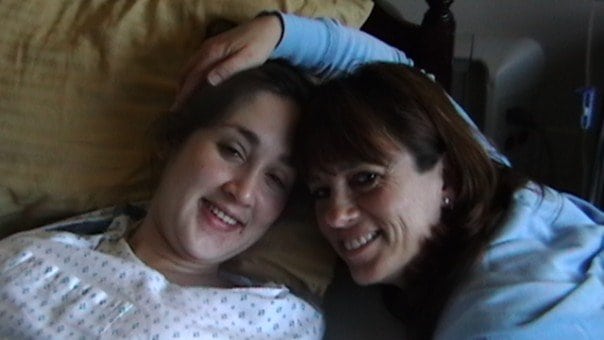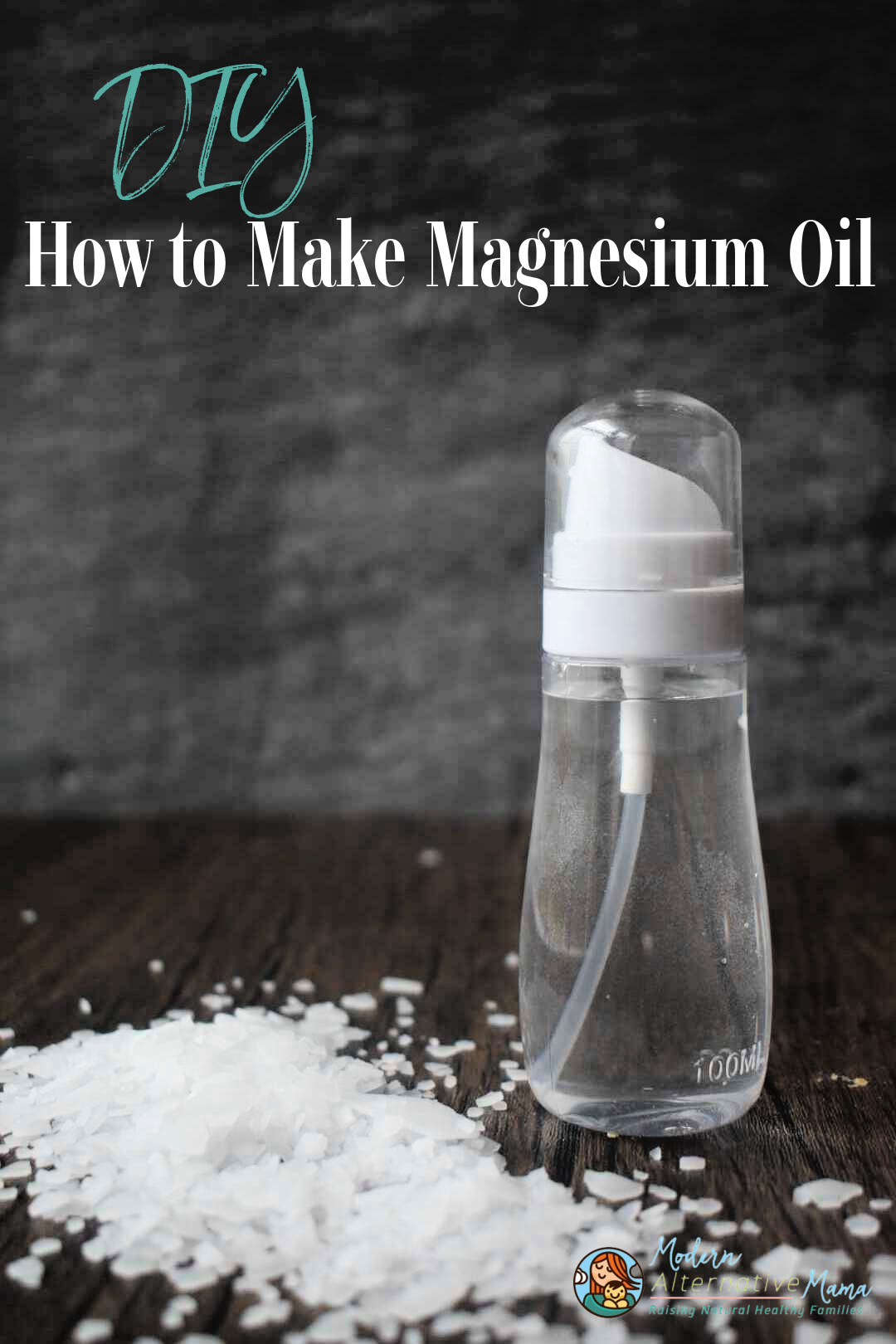It’s true that a mother’s body is beautiful and your tummy shows your love and devotion to your little one. It’s also true that strong belly muscles are helpful throughout your life, and especially while mothering little ones! I’ll outline simple steps to get a stronger tummy, relieve pain, and restore core strength. They work if you’ve had no babies, one baby, or a whole houseful!
Where Does the Tummy Come From?
Though some postpartum tummy comes from extra fat padding and loose skin, much of it is due to muscles in your belly being weakened. Your recti muscles run up and down along your belly, and they tend to get a lot of stress during pregnancy. This can lead to what’s called a diastasis, or separation between the two bands of the recti muscles.
The separation is right under your belly button, since that’s where the muscles meet. The connective tissue between the two muscle bands becomes stressed, leading to the tell-tale “pooch” postpartum. I drew this simple chart to show you what happens to the muscles after a pregnancy:
What to Expect After 31 Days
I was in incredible amounts of pain after my 5th baby was born; my stomach was so sore I could hardly move without crying. My midwife checked and found a huge diastasis recti. It was the pain that sent me searching for a solution, but I was also thrilled to see a “washboard tummy” re-emerge on my body.
I want to point out, though, that 31 days isn’t long enough to close a large diastasis. I used Julie Tupler’s program (more below) and she recommends a minimum of 18 weeks work. Note that the “routine” is simple to fit into a mother’s daily life – but it does take commitment. 31 days will go a long way towards resolving pain and tightening up your waistline – and it will give you a solid start on the path towards that stronger tummy.
It’s also important to understand that correcting a diastasis doesn’t mean losing weight – it means toning your core and healing your body. If you still have some pregnancy weight to lose, or you’re losing weight before trying to conceive, expect that you’ll see greater results as you shed the weight (but don’t wait to start working on the diastasis!). Remember to be patient with yourself and give yourself time to lose the weight. Breastfeeding and taking care of your baby help that happen, but it won’t be overnight!
31 Days to a Stronger Tummy
Though optional, I recommend you begin by splinting your belly. Julie Tupler has created a diastasis recti splint, which I highly recommend. I had a “love-hate” relationship with my two splints (I started with a large size and needed to move down to a small as my massive diastasis closed). They’re not the most fun to wear, but they support and hold your muscles while your exercises heal the connective tissue. You don’t have to use the splint, but I recommend it.
It’s safe to splint and do these exercise before, during, and after pregnancy. I wore the splint during the first half of my 6th pregnancy, stopping when I was really stretching it. Throughout my pregnancy, I continued to do the exercises. I had only a small diastasis after my son was born (and no pain) and I quickly closed it postpartum.
Begin the exercises gradually across the first few days. Julie has several exercises (again, all simple for a mother’s life), but I’ll cover the “core” exercise to get you started. Focus on your belly button and your spine. Now work to pull your belly button back towards your spine. It’s OK if you can’t “pull” it very far right now. Julie says to imagine an elevator going sideways (see my drawing for a visual). If you can pull all the way to your spine, that’s going to the 5th “floor”. When I started I could barely pull my muscles in at all – hitting only the 1st or 2nd “floor.” That’s okay – you’ll improve as you go along (it took me a few weeks, but I got there).
Step-by-Step Guide
Day 1: Get used to how it feels to do the exercise. Practice pulling your belly button back and relaxing it. Let go completely between squeezing the muscle back. You can do these discreetly pretty much any time. While you’re driving or nursing your baby are perfect.
Day 2: Do 2 sets of 50 squeezes – one in the morning and one in the afternoon.
Day 3: It’s time to figure out your normal set times – you’ll be doing 3 sets daily. Pick a good time in the morning, afternoon, and evening. Do 50 squeezes during each of these times.
Days 4-7: Do 100 squeezes during each of your 3 sets today. It’s normal to feel sore as you start this routine.
Day 8: Start to hold your muscles in at the “1st floor” today. Pull your belly button in towards your spine slightly today, and keep it there. When you do your three sets of 100 today, start from the 1st floor and squeeze back to the 3rd or 4th floor if you can (it’s okay if you can only go to the 2nd).
Days 9-14: You’ll repeat what you began on Day, focusing on keeping your muscles pulled to the 1st floor and pulling back past that for each of your 100 squeezes.
Day 15: You’ve probably already become much more aware of your recti muscles, and that’s good. Start to protect those muscles as you go throughout your day. Pull your belly button in when you’re lifting something (including your baby), or when you reach up for something. Keep up your sets of 100 – going back to the 5th floor today.
Days 16-21: Keep up your squeeze sets and stay aware of your muscles during your day-to-day routine. This awareness will keep a diastasis from coming back after you’ve closed it up!
Day 22: Be careful when you get out of bed, or off the floor. You don’t want to “jackknife” up – instead roll to your side and push yourself up with your hands. And sit-ups? Forget them. They use the same “jackknife” motion that can quickly re-open the diastasis recti you’re working hard to close! If you feel up to it, add in another set or two of 100 today… or do a set every time you drive or nurse your baby.
Days 23-31: Reading your preschoolers a story? Feeling your baby kick around inside your belly? These are great times to add in a set of squeezes (your baby may even respond to the squeezes with more kicks!). Now is the time to make working your abdominals a part of your daily routine so you’re always toning and strengthening your core!
Hooray! You’ve made it through 31 days! I highly recommend you you see this as a starting point, not an ending. Julie Tupler’s program is very helpful and she includes a checklist for every day of her 16-week routine. If you’re a visual person, the DVD is an invaluable demonstration of each exercise routine.
I never would have believed I’d see a flat tummy again after 6 (!!) babies, but these simple exercises has made that a reality – and most importantly, I have a stronger tummy. I’m pain-free and strong enough to keep up with everything 6 kids can throw at me! Click here to see my personal journey with diastasis recti.









Kristen, This was such a great article! Thank you so much for writing such a detailed plan for healing Diastais Recti. I experience a huge gap after my second pregnancy. I wished I would have known to splint during pregnancy. My abs were so sore the following weeks after she was born. Luckily, I knew to wear my abdominal binder to help keep my abdominal together. I’m slowly closing the gap, but noticed the biggest improvement over Christmas when we had a 17 hour drive and I focused on doing several sets during the drive of pulling in my belly. It really does work! Thanks again!
Thank you for posting this. I just had my second baby a few months ago and have a prolapsed rectum and bladder. I was told to get to work on exercises. Between 2 bouts of the flu and the new baby I have yet to begin in earnest.
As of reading this, I have compleated my first day. My abdomen is fine but these exercises really work the pelvic floor which I need. Thanks. I am looking forward to a bit if structure to get things back where they should be.
Thank you so much for this post! I didn’t know it could be so do-able. Though I’ve found simple, free exercises, I figured I’d have to really set aside time and focus on it (something I’m not prone to do). I had a mild diastasis after my first pregnancy, which I didn’t close before getting pregnant again 15 months later. My midwife had said it was just borderline at my 6-week check up, but after a few months it was plain to me that something needed fixing because after losing baby weight very easily, my tummy still bulged at that spot, and I could see it dome when I sat up from lying down. Now I know it may be worse after a second pregnancy and birth, but I’m super excited to try these exercises immediately, and talk to my midwife about wearing a band afterward. Thank you!
I am in my first pregnancy. Can I do this now or do I wait until after the birth? Thank you! (I am 18 weeks).
How much additional time do you think it’d take to correct a diastasis after 2 years (yes, 2 years!). I just learned of diastasis earlier this year and have been doing some exercises my chiropractor showed me, but not consistently enough to make a difference. I can get about 2 fingers in when checking for it if that helps gauge. Thank you so much for this article! I’m starting day 2 tomorrow!
I’m almost 4 months post partum. I carried my baby who was on the large side up very high. She also was ROA almost the entire end of my pregnancy. In the ROA position she kept her but stuck out to my right side so much I almost always had that extra bump. Almost 4 months later I’m still tender in that spot as well as my lower abs.
I am so happy you posted this. I was wondering if you would consider doing a series on post partum “rehab”…. I really want to do the work to get healthy. What are key things to get back to shape to prepare for another pregnancy: diastis recti, pelvic floor, nutrition, and uterine health. This would be a great series!
I healed mine by myself–I was in a lot of pain too, but I asked my OB and she thought I was being silly. So I researched and realized I had a gap wider than my hand. I used an indigenous cloth belly binding wrap and did basic exercises to heal mine…I didn’t think a splint was necessary and for me it wasn’t, even though mine was big. I healed it down to 1.5 inches in around 3 months. I didn’t start until I was 3 months pp, but mine was bad enough that even starting late helped. I did basic exercises, just walking while bound at first, then moved up to wall sits, mild yoga, and finally to dancing and harder yoga/planks and things like that. I was glad to get to heal it, especially not having to pay for classes or workouts, and now I sell the cloth wraps myself! I am now a doula so hopefully I can help other women who struggle with this, too.
[…] frozen foods // breaking down the “other” // daily routine fitness tips from fit2be // 31 Days to a Stronger Tummy {thankful that because of my sister I was aware of diastasis recti and have been able to prevent it […]